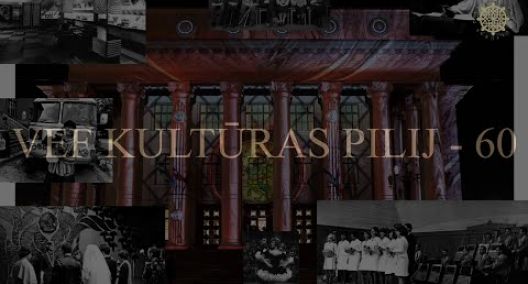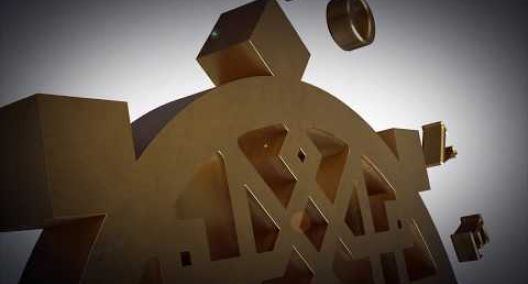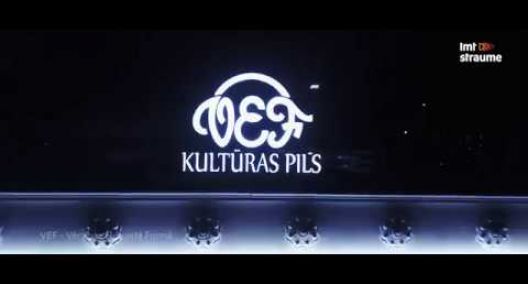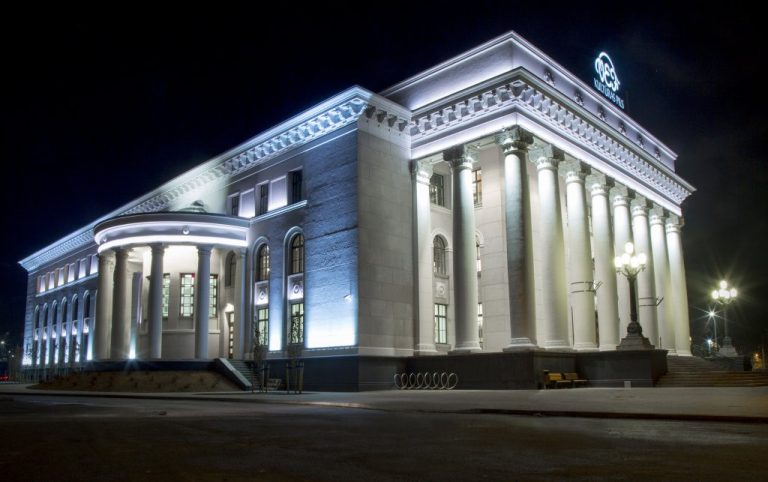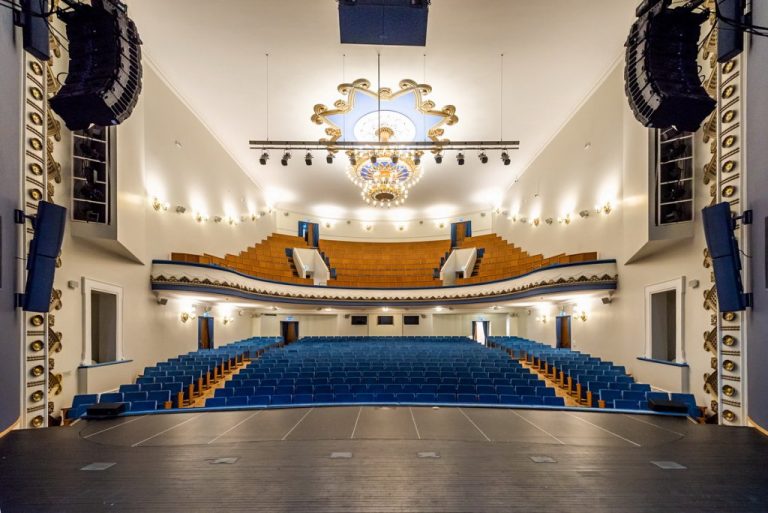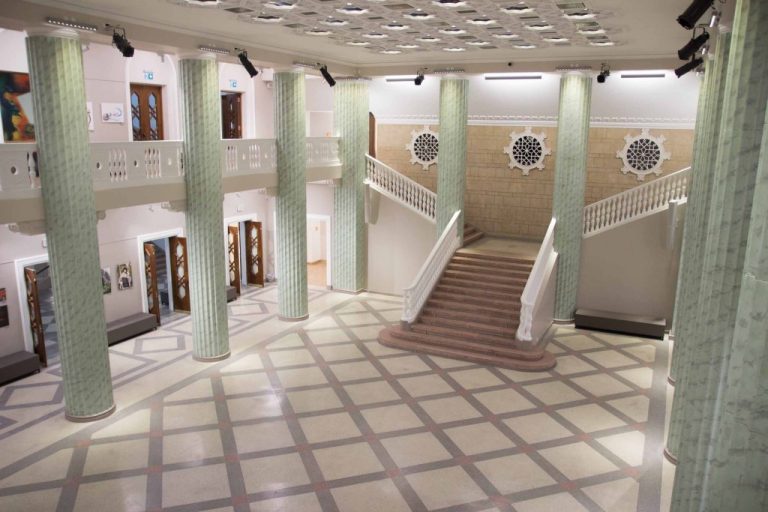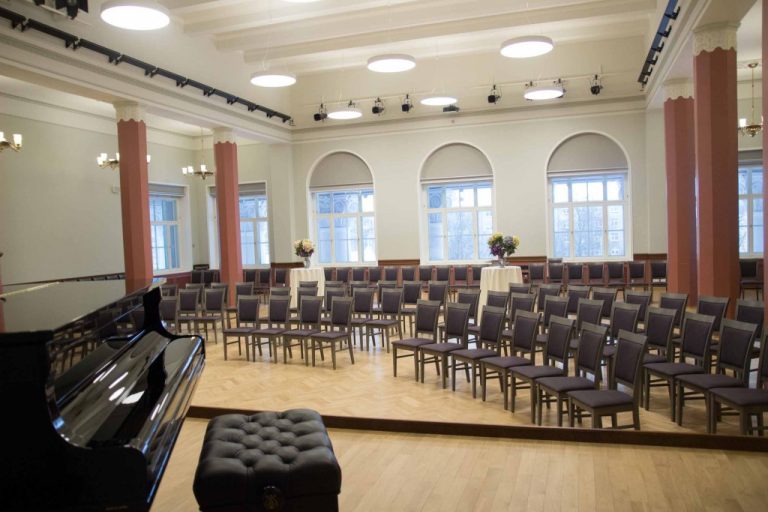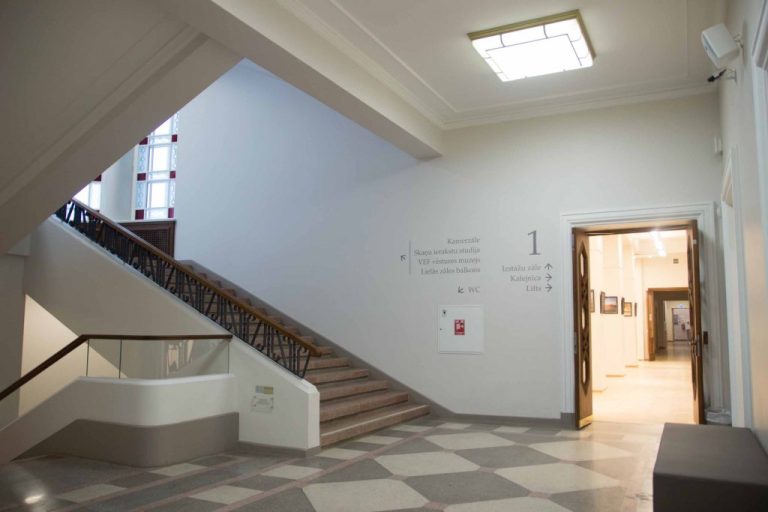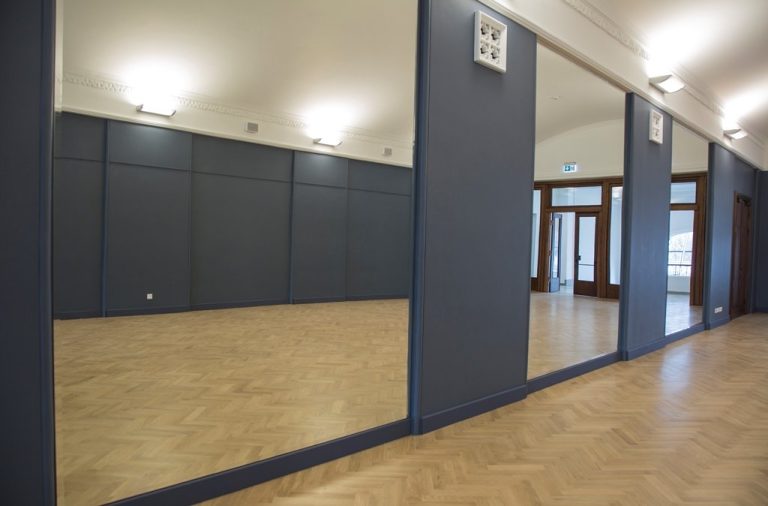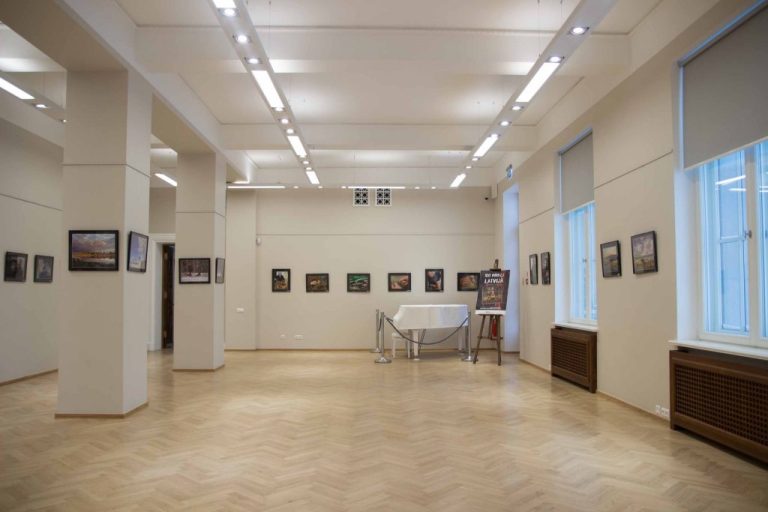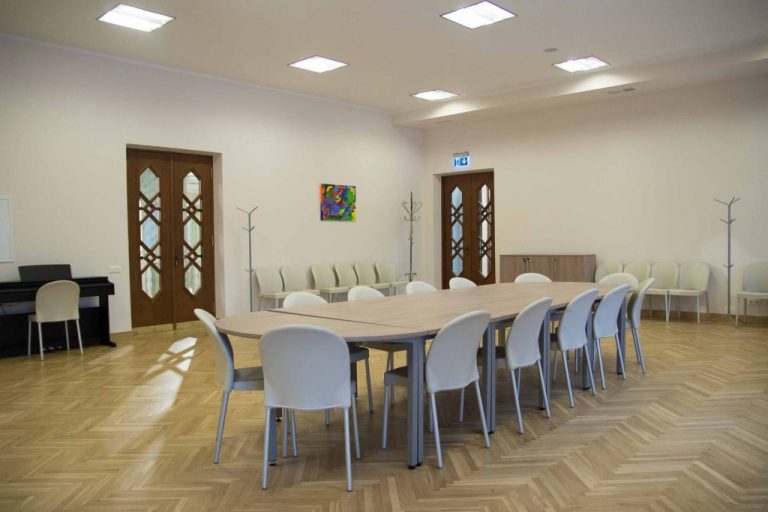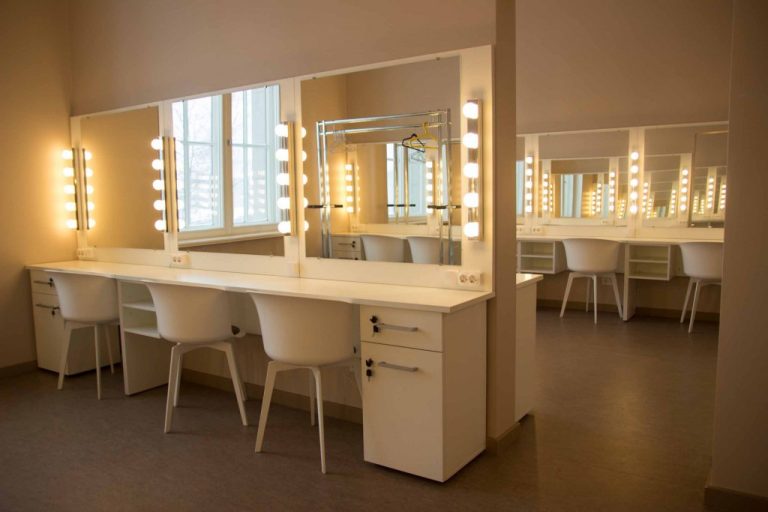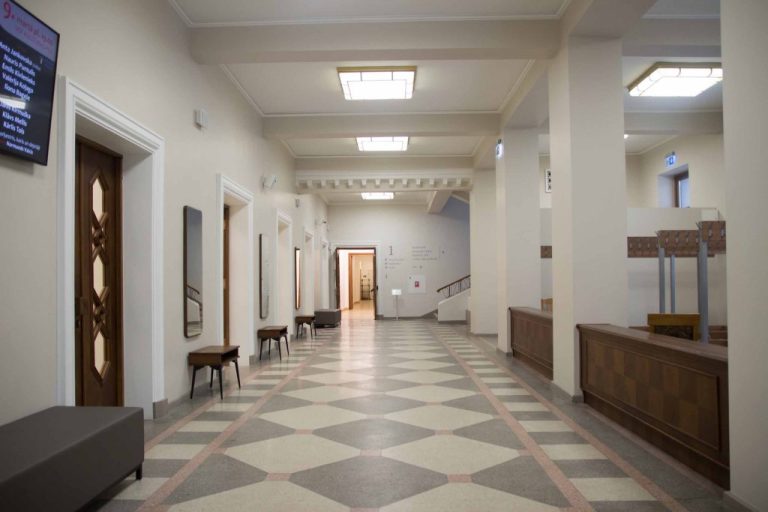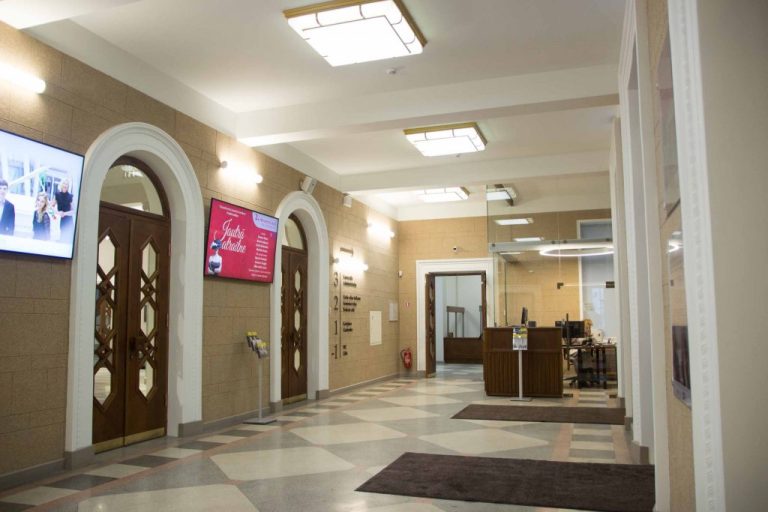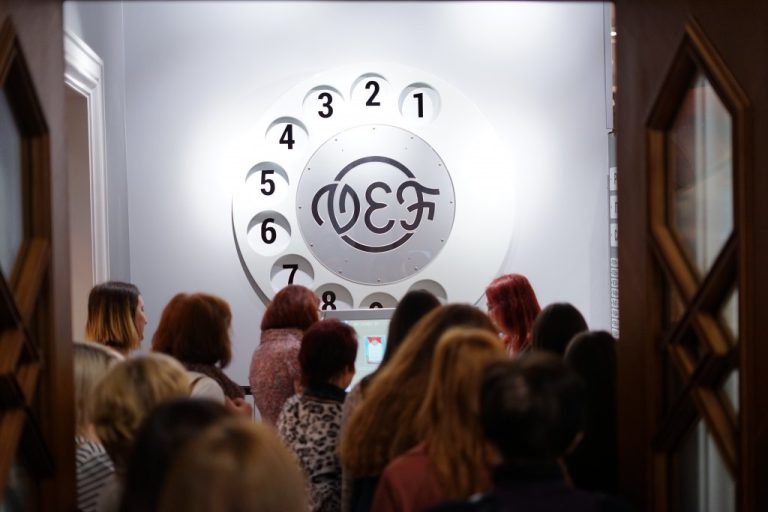VEF Culture Palace… the origins and meaning of “VEF”
On June 10, 1919, the Chief Administration of Post and Telegraph has opened its workshops for repairing telephone sets and telegraph machines in the post office building (currently 5 Aspāzijas Boulevard), employing 5 workers. Having expanded and commenced the production of telephone sets, the workshops assume the name of Central Workshops of the Chief Administration of Post and Telegraph and move to new premises at 16 Slokas Street (now the older material storage facility of the National Archives, 2 Slokas Street). The production maintained rapid expansion, and by 1924, it already employed a total staff of 700 people, working in 3 shifts – thus, the need for new premises arose once again. These were found on Brivības Boulevard, in the former building of the “Union” enterprise, which was evacuated along with other enterprises from Riga and other major cities to the inner lands of Russia in 1915. Thus, the Central Workshops of the Chief Administration of Post and Telegraph moved into the ex-“Union” premises in 1928. Apart from communication equipment, the plant used to produce just about everything that the Republic needed at the time. In 1928, the workshops were renamed to “Pērkons”, and in 1932, the name has changed once again to VEF – Valsts elektrotehniskā fabrika (the State Electrotechnical Factory).
In the 1930s, the factory employed top-class specialists, which explains why even nowadays people remember such unique products as “VEF Minox” cameras, “Luxus” radios and even aeroplanes, designed by Kārlis Irbītis, yet… World War Two… during occupation by Russian and German armies, the first Latvian state enterprise was razed and plundered.
The occupation of 1941 persisted after the War as well – Latvia used to be a part of the Soviet Union as the Latvian Soviet Socialist Republic.
In 1945, the battered enterprise was restored. Having retained its name, VEF, it was subordinated to the Ministry of Communication in Moscow.
The factory enjoyed further expansion and development, started other branch and subsidiary enterprises, mostly for the production of communication equipment – telephone and telegraph exchanges (commutation facilities). The factory’s production range also included radios and telephone sets, complicated equipment for simultaneous interpretation, sports scoreboards, microcomputers, transistors, electronic sports equipment for arbiters and informer units, industrial robots, unique medical equipment, portable educational computers, bobs and other products known in over 40 countries.
Large enterprises across the entire Soviet Union had their own cultural centres. VEF was no exception – the factory had a workers’ club and a library. Needs and demands were growing, however, and in the mid-1950 the city of Riga has begum the construction of a cultural building on Ropažu Street. The construction took place in the open fields; there were no other structures at this location back then.
Upon delivery of the completed cultural institution building to VEF, the city has changed its address from 2 Ropažu Street to 1 Ropažu Street, to make it sound better. After the first space flight in the history of humanity by Yuri Gagarin, the street was renamed in his honour. And so it remained for the entire Soviet period, until Latvia regained its independence, and the VEF Culture Palace regained its original address – 2 Ropažu Street.
Many employees of VEF participated in the efforts to put the Culture Palace into shape at the final phase of construction, and it was officially opened on March 1, 1960. Architect – Nikolai Sementsov, Chief Engineer – Ilmārs Placis. While the VEF Culture Palace is a good specimen of neo-eclectic “social realism”, it is still discerned by its much more reserved interpretation of classical shapes, meeting the specific function of the building, and less abundant use of décor, as compared to the masterpieces of the 1950s in Moscow, Leningrad and other cities of the USSR. This is most likely due to the strong influence of the national architectural and artistic traditions of the pre-War times, and the neo-eclectic style in free arts, which developed during the same stretch of time.
Handrails of the central stairs, ornamental belts and ceilings of the VEF Culture Palace, as well as chandeliers in both halls astound with a rich pattern and high-quality amateur workmanship. In 2009, the VEF Culture Palace was listed as an architectural landmark of national importance.
The first Director of the VEF Culture Palace was Nikolai Kardashov, appointed to this office by the administration of the factory, and by the Party Committee and the Trade Union Committee (he used to be the director of the VEF workers’ club since 1947, and kept the office of the Director of the Palace from March 1, 1960 to November 1, 1987).
In spring 1945, VEF has opened a workers’ club for its employees at 19 Lenina (now known was Brivības) Street. It was later transferred to the territory of the factory, to the building at 197 Lenina (Brivības) Street, which now houses a spacious gym.
Through the merger of the VEF Culture Palace, the library and the VEF cinema, with a seating capacity of 200, a single cultural workshop was formed and integrated into the VEF production enterprise. Technical and maintenance staff were deemed employed by the enterprise itself, and VEF used to pay their salaries. The factory also paid utility fees, repair costs and various materials required by the Palace. Creative personnel was paid by the Central Trade Union.
In 1978, by decision of the Secretariat of the All-Union Central Trade Union Council, the name of the VEF Culture Palace was supplemented; it was now called the “VEF Culture and Technology Palace”. Ženija Katkovska was appointed as its Deputy Director.
The institution was structured into five departments:
- the Folk Arts Department;
- the Mass Cultural and Educational Work Department (organisation of lectures, conferences, disputes, meetings, verbal magazines and entertainment nights). All these activities took place both in the Palace and at the enterprise itself;
- the Department for Work with Children and Adolescents;
- the Science and Technology Promotion Department, overseeing the Innovators’ Club and the Folk Museum of History of the Enterprise;
- the Recreation Organisation Department.
The Palace was attended by about one and a half million visitors a year. Over 50 amateur art groups, coteries, studios and interest clubs were listed as having over 3000 members.
In short, the Culture Palace gave employees of the VEF production association every opportunity to spend their free time after a day of work at the enterprise in an interesting and educating manner, developing their talents.
The VEF Culture Palace became a second home for many adults and children alike.
Creative arts enthusiasts enjoyed considerable practical assistance from the Artistic Council of the Palace. It was comprised of representatives of the association’s social organisations, art group leaders and prominent people of the artistic community. Ever since the Council was established in 1964, it was headed by Vija Artmane, a People’s Artist of the USSR.
The Artistic Council approved the repertoire of art groups, consulted the efforts thereof; its representatives participated in juries of shows and contests.
The mastery of amateur art groups based in the Culture and Technology Palace and their considerable contribution to the treasury of cultural values did not go unnoticed. The VEF History Museum and 12 more art groups have been awarded the honorary title to People’s Art Teams.
All amateur art groups of VEF were headed by professionals in the respective domains.
Names of many art groups and their leaders because famous both in Latvia and abroad.
When talking of the wealth of knowledge and diligent labour invested into the amateur art groups of the VEF Culture Palace, one cannot leave the names of at least a few artistic directors unmentioned – Jānis Dūmiņš, for instance; a prominent conductor, director of the “Riga” youth choir for many years, holder of the Order of the Three Stars and the head conductor of over 10 Latvian Song and Dance Festivals. Aija Baumane, the artistic director of the folk dance ensemble, a choreographer, a former solo performer of the National Academic Opera and Ballet, also holding the Order of the Three Stars.
Founder and leader of the “Rīgas pantomīma” ensemble (the first national art group of the pantomime), director and actor of the Dailes Theatre.
One should also mention Baiba Rasma Šteina, a choreographer and artistic director of the children’s and youth folk dance ensemble “Zelta sietiņš”, who is also a holder of the Order of the Three Stars. Under her leadership, the ensemble used to bring joy to audiences in over 60 countries of the world.
Cooperation with the artistic groups of the VEF Culture Palace has become the first step in the creative career of many prominent Latvian cultural luminaries, who now work with theatres, radio, TV, cinema, music and other creative domains.
In the early 1990s, after the restoration of national independence, large enterprises ceased to exist. The same fate befell the VEF production association – the first and largest national enterprise. At first, the VEF Culture Palace was intended for subordination to the Department of Culture of the Riga City Council along with other cultural institutions. However, as this was formally a cultural workshop with its own Articles of Association, there was no law in place yet that could substantiate the conversion thereof into a cultural institution. Thus, it took 10 years for the VEF Culture Palace to obtain the status of a municipal cultural institution of Riga. Over that time, the institution had to survive without financial support and without any sponsors. These 10 years were a trying ordeal for the management of the Palace, its employees and art group leaders. The situation required unconventional solutions and diverse creative searches and efforts – performances, concerts, festivals and many other events were held in order to raise money for paying salaries, taxes and utility fees. While the Palace had no legal protection whatsoever during that period, there were many people willing to appropriate the building as their private property; however, the Palace was able to withstand the pressure and retained its function as a cultural centre.
After the transfer of the Palace to the custody of the Riga City Council, the financial situation went back to normal – a part of the utility bills in arrears was paid, art group leaders, tutors and employees on staff started receiving salaries within the due terms. Having thus returned to the same level with other cultural institutions of the city of Riga, the VEF Culture Palace now remains the largest cultural centre in the country.
Since 2004, the “White Sparrow”, the annual cultural award of the Education, Culture and Sports Department of the Riga City Council, was granted to 17 amateur art group leaders, 4 technical employees and, of course, Ženija Katkovska, who was in charge of the VEF Culture Palace for many years. In 2018, the well-deserved award also went to the current Director of the Palace, Liene Kubiļus.
Following the provision of funding by the Riga City Council and the EU structural funds in May 2016, the VEF Culture Palace began its reconstruction and renovation, which implied refurbishment and refitting of its premises to meet the current needs, whilst retaining the historical value and the unique architectonic and artistic nature of the palace, as well as amelioration of the adjacent territory. In 2017, by the anniversary of the Declaration of Independence of the Republic of Latvia, November 17 and 18, the VEF Culture Palace has once again opened its doors for visitors, thus symbolically associating the country’s anniversary with the festive rebirth of the cultural and historical landmark.
Renovated and fitted with modern amenities, the VEF Culture Palace, which is a subordinate institution of the Education, Culture and Sports Department of the Riga City Council, is not just a popular tourist facility, but, first and foremost, one of the main cultural centres of the city and the entire country: an up-to-date environment for the discovery of cultural history, high-grade artistic expression, creative initiative and implementation of innovative ideas. In the activities of the cultural centre, the precious contribution of professionals is balanced and intertwined with the creative work and imagination of enthusiastic arts amateurs. Along with the preservation of and respect towards historical values, emphasis is placed on modern stimulating and inspiring interpretation, implementation and development of artistic processes. Values in an Elegant Form – the new motto and slogan of the VEF Culture Palace, embracing and accentuating the unified synthesis of fundamental traditions and modern qualities, capabilities and creativities.
Premises of the VEF Culture Palace include several commodious halls with up-to-date equipment, as well as a number of smaller rooms for seminars and presentations. Spacious and equipped to meet the modern requirements, the Grand Hall can house over 820 during concerts, conferences and stage performances. Capable of admitting as many people as the Grand Hall, the Balcony Lounge is a great venue for any cultural event or festive night. The Chamber Hall on the third floor is large enough to welcome about 300 guests at once. Should an event require greater spaces, it can be used together with the adjacent Mirror Hall, thus increasing the total capacity to 400 visitors.
By offering cultural events of high value and a high-quality environment for creative activities, the renewed VEF Culture Palace conduces and helps social integration, introduction of creative initiatives, diversity of the city’s cultural life, involvement of young people in social activities, as well as the intensity and ongoing improvement of cultural processes. Existence of the VEF Culture Palace as a cultural centre, its stability and achievement of its goals in the domain of culture are secured by means of the budget funds allocated by the Municipality of Riga, project co-financing and support, supervision and control measures, as well as the revenues of the institution itself. The main objective pursued by the VEF Culture Palace is to be a versatile facility, open for the public and competitive within the boundaries of Riga and Latvia, as well as at the international level.
